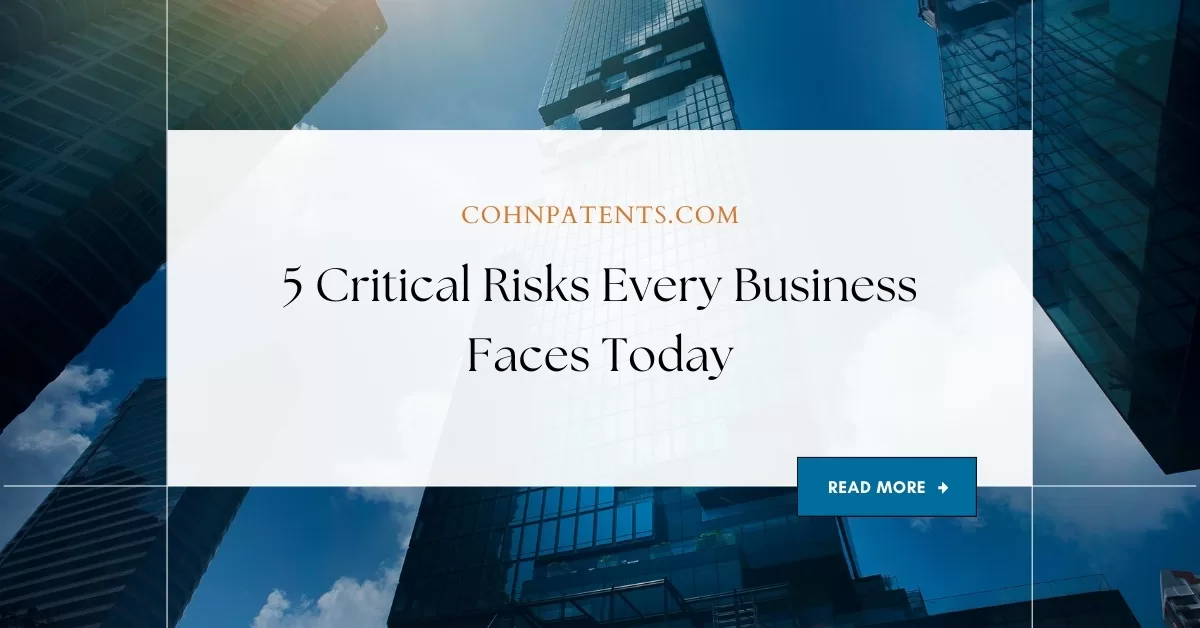Critical Risks Every Business Faces Today
The United States no longer dominates world manufacturing. To make matters worse, commodity prices of metal and manufacturing materials have skyrocketed causing manufacturing profits to plummet. A recent study found that each year, more than 70% of companies experience supply chain disruptions resulting in a drop in operating income, a reduction in sales and an increase in cost.
Innovation is often the only way to survive.
As succinctly said by Steve Jobs, “innovation distinguishes between a leader and a follower.” Unfortunately, the same innovations that can propel a company forward can also make life much more complicated.
One reason is that innovations also create an increase in intellectual property theft. 2010 also marked the first time in history that intellectual property theft from companies outnumbered instances of physical theft from companies.
Nevertheless, the primary advantage a company has is its innovative secrets.
But why are so many companies failing to protect themselves and what are some of the hidden dangers companies face in their future?
Danger No. 1 is not understanding the value or even the existence of their intellectual properties, also known as their soft assets.
In our new economy, the value of a company is not based on quantifiable assets like plants, equipment and inventory. In fact, as much as 80% of a company’s total market value can be found in its soft assets such as ideas, relationships, and expertise. Unfortunately, a recent survey found that two out of three executives felt that they were failing to recognize or protect their soft assets.
Danger no. 2 is intellectual property theft and product manipulation.
A large number of attempts to steal the intellectual property of U.S. companies emanate from outside the U.S and costs U.S. businesses billions of dollars a year and robs our nation of jobs and lost tax revenues.
Everyone wants our ideas, but no one wants to pay!
Danger no. 3 is not understanding the hidden complexities in protecting intellectual property.
Many companies think they are protected, but in truth, these “so-called” protections often fail. Understanding the hidden complexities of intellectual property protection is complicated and confusing. What are some of common mistakes surrounding these protections?
Mistake 1 is over-simplification
For example, confidentiality agreements are often the only method available to stop employees from sharing trade secrets. Unfortunately, employers frequently make the fatal mistake of underestimating their complexity.
Mistake 2 is confusion about which protection to get. For instance: should you get a trademark, service mark, or both? Since they are extremely similar, often companies do not realize when they need to file for both.
If a company is not properly protected, another company can use their ideas, leaving them high and dry.
Mistake 3 is lack of experienced legal counsel
The world of intellectual property protection can be confusing, It includes copyrights, trademarks, service marks, patents, and trade secrets. The reality is that the legal work for protecting these soft assets is often delegated. Being that writing patent applications and other intellectual property documents is very difficult and challenging work, many senior, experienced IP attorneys eagerly turn this work over to their subordinates. In other words, a junior associate frequently handles the protection of a company’s most valuable assets, their intellectual property.
Danger No. 4 is getting the protection of your intellectual property into the right hands.
Most companies don’t know where to turn when looking to protect their innovations. The company’s most valuable resources are out of management’s hands. For example, does the person entrusted with this responsibility know how to write a patent application in such a way as to “cover all your bases?” Making the wrong choice can be devastating.
You might wonder why is it so difficult to get patents just the way you want them?
Danger no. 5 is overlooking relationships.
There are two important parties to consider when patenting your inventions.
The patent examiner who reviews patent applications and determines whether they meet the requirements to grant the patent and the patent attorney who writes the patent application covering the new invention.
There is an adversarial relationship between the patent examiner and the patent attorney and it’s very important to retain patent counsel that has successfully navigated these treacherous waters.
That leaves us with the question of how do you address these complexities while protecting your intellectual properties at the same time?
Step no. 1 is to evaluate your company.
Analyze your risk factors such as what would be the ramifications if you were to lose ownership of your most valuable intellectual properties? The questions to ask are: where do we stand and have we recently completed an internal assessment of our company’s intellectual property?
Step no. 2 is to partner with a superior patent and trademark attorney based on their longevity and experience with industry and someone who won’t delegate your future to inexperienced associates.
One that has the proven ability to write broad patent applications and to prosecute them in the Patent Office to provide the best protection and future royalties for your inventions.
Contact your Patent Attorney to learn more.


